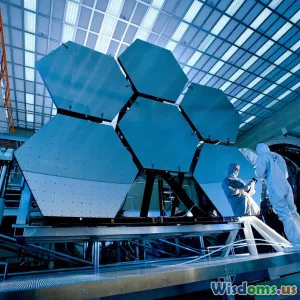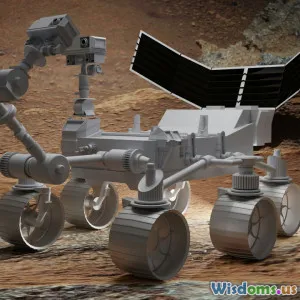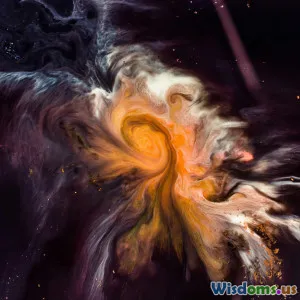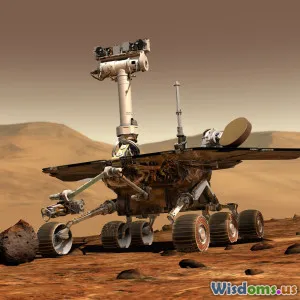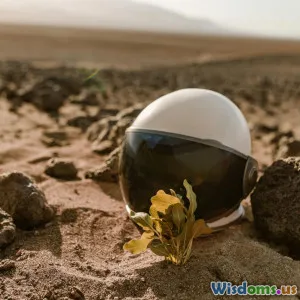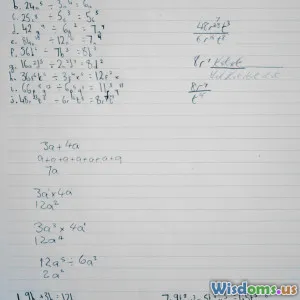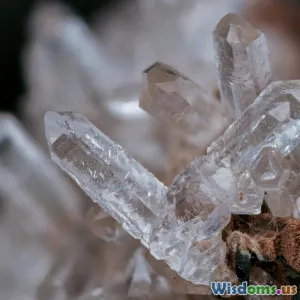
Asteroids and Comets: Cosmic Wanderers
9 min read Explore asteroids and comets, the cosmic wanderers of our solar system, revealing their origins, differences, and the secrets they hold. (0 Reviews)
Asteroids and Comets: Cosmic Wanderers
Introduction
When gazing up at the night sky, we often marvel at stars, planets, and sometimes streaks of light known as shooting stars. But wandering silently through the vast cosmic ocean are other celestial nomads: asteroids and comets. These fascinating cosmic bodies offer vital clues about the origin and evolution of our solar system. Known as “cosmic wanderers,” they journey through space—sometimes dangerously close to Earth—carrying secrets locked away since the solar system’s infancy over 4.5 billion years ago.
This article delves deep into the enigmatic worlds of asteroids and comets, exploring what sets them apart, their origins, their impact on science, and why astronomers keep a watchful eye on them.
Nature and Origins of Cosmic Wanderers
What Are Asteroids?
Asteroids are rocky, airless remnants from the early solar system. Mostly found in the Asteroid Belt between Mars and Jupiter, they range from tiny boulders to nearly 600 kilometers wide—the largest being Ceres, designated a dwarf planet. Scientists believe asteroids are leftover building blocks that never formed into planets due to the gravitational tug of nearby Jupiter.
Compositionally, asteroids vary:
- C-type (carbonaceous) asteroids make up about 75% of known asteroids and contain carbon-rich materials.
- S-type (silicaceous) asteroids contain silicate rocks and nickel-iron.
- M-type (metallic) asteroids are mostly composed of metallic iron and nickel.
An excellent illustration of asteroid science comes from NASA’s OSIRIS-REx mission, which collected samples from asteroid Bennu—a carbonaceous asteroid—offering insight into organic compounds that could have seeded life on Earth.
Understanding Comets
Comets are icy bodies originating from the cold outer edges of the solar system, specifically the Kuiper Belt and Oort Cloud. Their “dirty snowball” composition combines frozen gases, dust, and rocky material. When a comet approaches the Sun, the heat causes sublimation, turning ice into vapor and forming a spectacular glowing coma and often a tail that points away from the Sun.
Notable comets include Halley’s Comet, visible from Earth every 76 years, and Comet Hale-Bopp, whose brilliant display captivated viewers in 1997. The European Space Agency's Rosetta mission famously landed a probe on Comet 67P/Churyumov-Gerasimenko, providing unprecedented data about comet composition and activity.
Origins and Paths
Asteroids generally orbit the Sun in relatively stable paths within the inner solar system’s asteroid belt or near-Earth space. In contrast, comets often have highly elliptical orbits, taking them from the distant outer solar system close into the inner solar system and back.
Their trajectories can sometimes cross Earth’s orbit, posing both scientific opportunities and potential threats.
Differences Between Asteroids and Comets
While both asteroids and comets are remnants of solar system formation, key differences distinguish them:
| Feature | Asteroids | Comets |
|---|---|---|
| Composition | Mostly rock and metal | Ice, dust, and rocky material |
| Location Origin | Asteroid Belt between Mars/Jupiter | Kuiper Belt and Oort Cloud |
| Orbit | Mostly circular or elliptical in inner solar system | Highly elliptical orbits between outer and inner solar system |
| Visual Features | No tail, rocky surface | Coma and a tail when near Sun |
| Size | From small stones up to hundreds of kilometers | Usually smaller (few km), but very bright when near Sun |
These distinctions have practical implications. Asteroids tend to remain relatively inert, while comets display dynamic behavior that produces spectacular tails visible from Earth.
Scientific Significance and Exploration
Time Capsules of Solar History
Both asteroids and comets are invaluable time capsules. Their ancient materials contain pristine information about the composition of the primordial solar nebula that birthed our Sun and planets.
Asteroid samples such as those brought back from Japan’s Hayabusa missions, and of course OSIRIS-REx’s ongoing analysis, help scientists parse the chemical and mineralogical makeup crucial to understanding planetary formation. Likewise, studying comets reveals the abundance and distribution of water and organic molecules across the solar system.
Impacts on Earth and Human Culture
Historically, asteroids and comets have influenced Earth profoundly—imagine the asteroid impact 66 million years ago that led to dinosaur extinction, an event intricately linked to mass biological and geological upheaval.
More recently, astronomers track Near-Earth Objects (NEOs) to assess collision risks. Programs like NASA’s Planetary Defense Coordination Office use telescopes and data from missions such as NEOWISE to identify potentially hazardous asteroids early.
Culturally, comets have inspired folklore and awe for millennia — sometimes viewed as harbingers or omens.
Future Prospects and Challenges
Mining Cosmic Resources
Asteroids hold vast stores of metals like platinum and valuable resources like water ice that could support space exploration. Concepts for asteroid mining could revolutionize resource acquisition, reducing the need to launch everything from Earth.
Protecting Our Planet
Developing strategies to deflect or disrupt hazardous asteroids is a focus of international collaboration. The recent DART Mission (Double Asteroid Redirection Test) successfully demonstrated the ability to impact and alter an asteroid’s orbit—a potential game changer for planetary defense.
Scientific Frontiers
New telescopes, spacecraft, and even crewed missions aim to deepen comprehension of these bodies. The Vera Rubin Observatory, for example, will vastly improve detection rates for asteroids and comets.
Conclusion
Asteroids and comets, the cosmic wanderers of our solar system, are more than just space debris; they are storytellers from the dawn of our planetary neighborhood. They offer extraordinary insights into the formation of the solar system, the origins of water and life, and the future of human space exploration. From ancient impacts that shaped biological history to advanced missions rewriting space exploration paradigms, these small wanderers carry enormous significance.
As we harness technology to explore and possibly utilize their resources, humanity’s relationship with asteroids and comets continues to evolve. Understanding and respecting these cosmic visitors ensures we are better prepared to coexist safely with our celestial environment while uncovering the mysteries they hold.
The sky’s not the limit; with these cosmic nomads, it's just the beginning.
Rate the Post
User Reviews
Popular Posts










